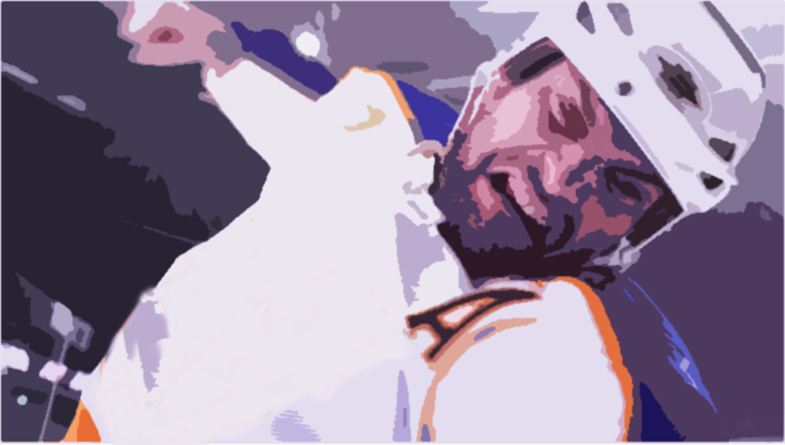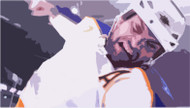The Future of the Enforcer and Fighting
Posted by Bobby Kilian on 05 07 2015

For decades almost every NHL team had one player who was strategically used for fighting, the enforcer. Men in this role were looked to by coaches and players to fight for teammates, who were smaller in size, change the momentum of the game and fire up or demoralize the players of both benches. More often than not enforcers would only fight men of the same position making both respected and feared. Now fast forward to fighting in the present day NHL. Tussles more typically occur between two random players. This type of fighting occurs purely out of emotion and passion for the game. Center ice glove drops have been swapped for board battles and aggressive scrums around the net.
In the last three NHL seasons we have seen changes in the game. Rules have been implemented to prevent and discourage fighting. Since the beginning of Professional Hockey, fighting has always been a major part of the game. These rule changes have sparked many questions; will the role of the enforcer be eliminated from the game? Will fighting no longer be acceptable in hockey? What changes will we see in the game moving forward?
Before these questions can be answered, take a look at this video regarding enforcers and their current roles in the NHL…
https://www.youtube.com/watch?v=jygko4bXH0I
In the video above credible evidence is provided that demonstrates the fact that the so-called enforcer has proven to be detrimental. Puck possession is a very real statistic that most NHL teams pay great attention to. There is a direct correlation between teams with a lower amount of puck possession time, and the teams who tend to lose games. The bad news for the enforcer is that most often, the teams that are losing games due to puck possession have a player in this role. From the stand point of NHL teams the positives of having an enforcer on the team do not outweigh the negatives. When the season and playoffs are on the line, these players get little to no ice time. So what is the only logical thing to do? More than likely they will be sent down to the minors. The harsh reality is that a player whose only real role is to fight will no longer be found in the NHL. While in the minor’s these players may have the opportunity to work on and strengthen other aspects of their game, but if they fail to do so, it is a probability that they will never be seen in the NHL again. This begs the question “If enforcers are no longer around to fight, what will happen to fighting in the NHL?”
Large groups of people feel that fighting no longer has a place in hockey. The fight that occurred October 1, 2013 between George Parros and Colton Orr supports majority of their arguments. You can see the fight here. On this night, Colton Orr and George Parros had gone toe-to-toe for the second time. This time it ended poorly for George Parros. After this fight many questions arose regarding the necessity of fighting in hockey at every level. Rule implementation as mentioned previously is the NHL’s way of discouraging fighting, but the fact is that fighting is a very large part of the game that is likely here to stay. Usually fighting is a way of demonstrating that cheap shots will not be tolerated. At higher levels of hockey many players feel that fighting is necessary because it is a checks-and-balances system preventing dirty play with sticks, skates, and vicious hits. In the present day NHL we have seen fights occur between some of the most skilled players solely because of the aforementioned reasoning. It is an aspect of the sport that many believe must remain intact to ensure the safety of players. The final question that is asked regarding the fighting and the enforcers absence in the game is “What sort of changes will be seen in the game moving forward?”
Hockey is evolving; there is no doubt about that. Speed and endurance have become such a big part of the game that requires players to now train year round, with little if any time off, to prepare for the next season. This newer breed of hockey player trains agility, balance, and endurance to bring a new level of competition to the game. It is for this reason that the enforcer has become a detriment to their respective team. Strength on skates and upper body strength were once held in high regard, but we have now seen these attributes replaced with speed and hand eye coordination. In recent seasons acrobatic plays and pucks whacked out of mid air into the back of the net occurs on a more frequent basis. Where a player was considered lucky when goals like this occurred in the past, it is now an aspect of the game that players practice regularly both on and off the ice.
Ultimately, hockey is a game of will, strength, and endurance that combines every aspect of athletes’ abilities. Hockey is constantly changing forcing the players to adapt and grow if they wish to be successful. Clearly the enforcer is a role that the game has simply out grown. In the absence of this role hockey will become a more exciting game through a faster pace and more talented athletes. However, despite the rule changes put forth in the NHL, fighting is an aspect of the game that will stay as long as players feel they must have a means of protecting themselves. There is little chance that the game will ever completely outgrow fighting, but the situations in which fights occur will be changed forever. We may no longer look forward to seeing two warriors clobbering one another for the teams betterment, but we can look forward to the raw athletic ability of athletes who train tirelessly to achieve their dreams of playing in the NHL.

